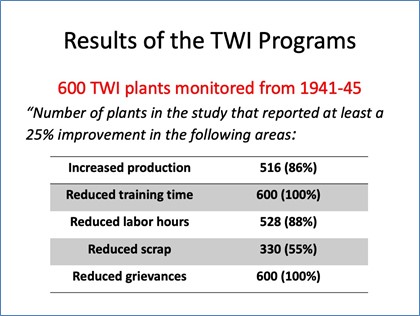Competency 101 – Part 3 Ok… So What Can I Use These Things For?
Jeff Griffiths, FCMC CTDP
In the previous two Competency 101 articles, Part 1 and Part 2, I introduced some foundation ideas around competencies. The next question that comes up is “Why should I use them? What makes this better than what I’m doing now?”
Well, here’s what we know about traditional hiring practices:
The traditional way of hiring someone involves reviewing resumés to find people who seem to have the right skills and experience, conducting interviews to gauge how they measure up, and then hiring the “best candidate”.
The only problem with this approach is that it doesn’t really work that well:

- The traditional resumé has a horribly low ability to predict job success – about a 20% correlation
- Good people can have lousy resumés… and vice versa
- While experience SHOULD be valuable, studies show that it doesn’t accurately predict the success for a new hire[1]
- People who “interview well” often get that way by being interviewed a lot. Practice makes perfect.
- Even good behavioural interviewing doesn’t guarantee that someone can’t “game” the system. A lot of those questions – and the “best” answers, are a Google search away
On the other hand, here’s what we know about competency-based talent management practices:
Companies that use competencies for recruiting and hiring:
- Have lower hiring costs (about 1/3 less, on average)
- Find candidates with a better fit, faster (about twice as fast)
- Have greater success in hiring (people they hire tend to be more successful, and stay with the company longer)
- Take less time to onboard new hires and get them up to speed (one of our clients reduced onboarding and training time by several months)
Companies that actively manage competencies
- Have better safety records – doing things right means doing things safe
- Have less rework – doing things right… well, means you do things right!
- Have higher productivity – doing things right usually results in doing things more efficiently
- Have increased employee engagement – people who are learning are thinking. And people who are thinking tend to be more motivated and engaged
- Have lower employee initiated turnover – people who are being developed don’t feel they need to go elsewhere to grow
- Are more profitable and competitive – because when you manage competency, all your other metrics move in the right direction
If you’re not using competencies as the foundation for your organizations business practices, you’re not doing as well as you could be, or should be. And your customers, your employees, and your bottom line all suffer because of it.
[1] Beard, Allison. “Defend Your Research: An interview with Dr. Chad H. Van Iddekinge. Harvard Business Review, September-October 2019
What’s your experience with using competencies in your organization? Leave a comment below.
Read With Us
If you found this information useful, please subscribe to be notified for our next great post.
NEXT: A case study that shows the dollar value of competency based approaches.
Pervious: A BRIEF HISTORY OF TWI
It’s remarkable designed for me to have a site, which is helpful designed for my knowledge. thanks admin hafilat bus…
Please let me know if you’re looking for a article author for your blog. You have some really great articles…
steam mobile authenticator it is a desktop emulator of the Steam authentication mobile application. This desktop application allows users to…
They’re allegedly co-developing a “bio-spiritual smart joint” that auto-adjusts terpene ratios based on the user’s EEG input in real time.








This is really interesting, You’re a very skilled blogger. I’ve joined your feed and look forward to seeking more of…